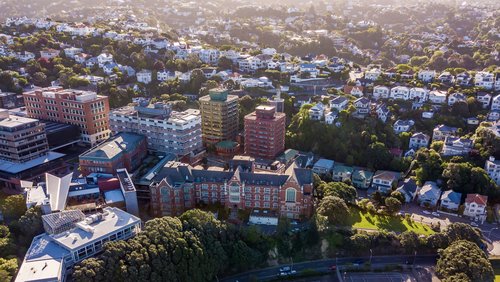21 Jun 2021
How concerned should commercial building landlords and tenants be about the risk of Covid-19 infection spreading through heating, ventilation and air conditioning systems?
Since the start of the global pandemic, government bodies and industry associations have been reviewing scientific evidence and publishing guides specific to building heating, ventilation and air conditioning (HVAC) systems.
It’s generally recognised that the most likely transmission path inside buildings is via near-field (less than 2m) exposure to respiratory aerosols exhaled by infected people, or via contact with contaminated surfaces. This is because the size of most respiratory aerosols is such that, at least in still air, they typically settle out of the air and onto surfaces within the near field. Therefore, we have the fundamental principles of isolating infected people, social distancing, sanitation and sound hygiene measures.
Minimising the risk of transmission
There is also evidence localised air currents generated by HVAC systems can carry some smaller respiratory aerosols beyond the near field. They can remain airborne for several hours and poor ventilation can cause sufficient build-up of far-field (more than 2m) airborne aerosols to increase the risk of exposure for susceptible individuals.
This risk appears to increase when people are performing activities such as high-intensity exercise, singing, or loud talking. Ventilation rates less than 2 litres per second per person (L/s/p) have been cited for a number of reported outbreaks overseas. This is significantly less than the current New Zealand building code standard of 8–10 L/s/p for most commercial buildings and 5 L/s/p for some variable and shorter-term exposure environments such as retail. So current building code compliant ventilation is expected to minimise the risk of far-field transmission.
In older buildings with lower ventilation rates, it may be prudent to consider increasing ventilation rates where practicable (the benefits being most significant the lower the existing rates), while taking into consideration factors including energy use, thermal comfort, noise, exposure to external pollutants and financial consequences.
Ventilation systems should be checked to confirm they are functioning as designed, and typically operating continuously while the building is occupied (including by cleaning, maintenance, or construction workers). Consideration should also be given to running ventilation an additional hour or so either side of occupation to pre and post-purge the room air. In the case of demand-controlled ventilation, consider lowering control setpoints if this assists with maximising ventilation in favourable seasons.
Filter efficiencies
In air-conditioned spaces, some room air is typically recirculated and mixed with outdoor ventilation air before being filtered, heated or cooled and returned to the occupied space. This recirculated air may increase the risk of cross-infection between spaces.
While this risk is currently considered lower than that associated with far-field airborne transmission from an infected person in a single space, it can be further managed by the use of higher-efficiency filters in the HVAC system. Multi-pocket bag filters with efficiencies of “ePM1” (to ISO16890) or “F7” (to EN779) or better remove a significant percentage of the smaller respiratory aerosols that could be entrained in recirculated air. Having said that, these filter efficiencies are typically only practicable with central air handling systems as used in medium to high-grade commercial buildings. And even then, upgrading lower filter efficiencies in existing systems needs to consider the potential for the increased filter pressure drop to reduce system airflow and therefore thermal performance.
Multi-pocket bag filters are not typically practicable with “unitary” air conditioning systems such as fan coil units, split systems, variable refrigerant flow (VRF) and the like. These systems are more common in lower to medium-grade commercial buildings, plus specific occupancies that are not suited to central air handling systems such as hotel bedrooms. They typically have insufficient fan pressure capability to cater for the high-pressure drop associated with the above filters. On the plus side, “unitary” systems only recirculate air around the one or a small number of adjacent spaces served by each unit, thereby limiting the potential for cross-infection via the HVAC system to the spaces so served.
Disinfection equipment
Health care facilities are seeing increasing use of UV-C light or ionisation disinfection technologies within HVAC systems, and the global pandemic has seen a proliferation of similar equipment being marketed for use in commercial buildings. The American Society of Heating, Refrigerating and Air-Conditioning Engineers (ASHRAE), and The Chartered Institution of Building Services Engineers (CIBSE) in the United Kingdom suggest consideration of disinfection equipment in commercial buildings. However, CIBSE notes it should be seen as a supplement rather than an alternative to adequate ventilation, and that where there is adequate ventilation, the cost-benefit may be limited.
Beca’s discussions with international health ministry infectious disease experts and commercial building landlords also suggest any decision to include disinfection equipment in commercial buildings is, at least at this point in time, being driven more by marketing objectives than evidence of their additional cost, energy and maintenance being warranted on top of ventilation and filtration basics.
Small, portable in-room air cleaners typically include high-efficiency filters and in some cases UV, ionisation or other disinfection technologies. There is currently little evidence they provide effective control of coronavirus, but air cleaning principles suggest they may be suitable for example, in smaller spaces with insufficient ventilation that cannot readily be improved, or spaces with particularly vulnerable occupants. ASHRAE recommends using portable air cleaners “for which evidence of effectiveness and safety is clear”. Be cautious of equipment that produces ozone or other chemicals as these may be a respiratory irritant.
Duct cleaning and thermal environments
Unlike other pathogens such as bacteria and fungi, viruses require a host cell for replication and therefore become unviable overtime outside such a host. CIBSE recommends no change to normal HVAC duct cleaning and filter replacement protocols, other than using personal protective equipment while doing so. There is evidence viruses survive better in colder and drier environments, so spaces should be maintained at a comfortable temperature with relative humidity above about 40 percent where practicable.
In summary, HVAC systems should be considered as part of a hierarchy of risk controls, including distancing, face masks, sanitation, hygiene and contactless technologies such as lift destination control, smart lighting, automatic doors and touchless bathroom equipment. As noted by the UK Government Environmental and Modelling Group, “assessing HVAC systems in many environments requires engineering expertise, and mitigation measures are setting-specific, taking into account the nature of the building and users, HVAC type, length of exposure and activity. Unlike distancing and hand washing, HVAC requirements cannot easily be distilled into one simple approach that everyone can follow”.
Martin Wemyss CMEngNZ is a Senior Technical Director and Technical Fellow (Building Services) at Beca, responsible for the continuous improvement of Beca NZ building services technical practices. His areas of special interest include emerging technologies and new engineering service offerings, client technical risk management, consultation on regulations and industry standards, building services seismic.
Find out more
Guides for building owners, users and engineers can be found on the Covid-19 section of the following websites:
ashrae.org
cibse.org
gov.uk/government/publications




